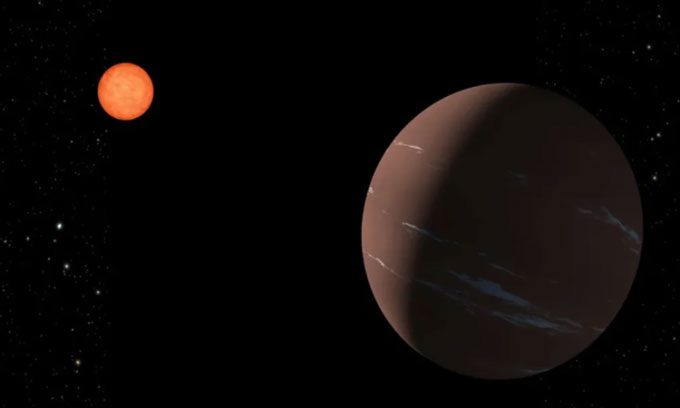Astronomers Discover a Super-Earth in the Habitable Zone Orbiting a Star 137 Light Years from Our Solar System
The exoplanet, named TOI-715b, orbits a small, cool red dwarf star that is smaller than our Sun. Astronomers discovered this planet using TESS, NASA’s Transiting Exoplanet Survey Satellite. They published the findings in the Monthly Notices of the Royal Astronomical Society, as reported by CNN on February 10.

Super-Earth TOI-715b orbits a red dwarf star. (Image: NASA/JPL-Caltech).
The research team estimates that the planet is about 1.5 times the size of Earth and takes just over 19 days to complete one orbit around its host star. It is located close enough to the star to exist within the habitable zone, which is the distance from the star that allows for suitable temperatures for liquid water to exist on the surface.
The habitable zone is usually calculated based on factors such as the size, temperature, and mass of the star, as well as the reflectivity of the planet’s surface. However, there can be significant uncertainties associated with these factors, leading to questions about whether the planet truly lies within the habitable zone, according to the lead researcher, Dr. Georgina Dransfield from the School of Physics and Astronomy at the University of Birmingham, UK. Astronomers believe that TOI-715b resides in a narrower, more optimal region of its host star known as the conservative habitable zone, which is less affected by the range of uncertainties.
Since its launch in 2018, TESS has helped astronomers discover many planets around relatively nearby stars that are suitable for further observation using ground and space telescopes. The telescope can detect dips in starlight, revealing planets that transit in front of it. TOI-715b is close to its host star and has a quick orbit, meaning the planet frequently passes in front of the star. This planet is an optimal candidate for future observations with the Webb Space Telescope. The Webb Telescope observes the universe using infrared light and can investigate the atmospheres of planets.
As the planet passes in front of its host star and filters the starlight, Webb can search for evidence of an atmosphere, even identifying the atmospheric composition of the planet. If a planet the size of Earth is confirmed, it will become the smallest planet found in the habitable zone by TESS.
Red dwarfs are the most common type of star in the Milky Way. Some red dwarfs host small rocky planets, similar to the recently discovered TRAPPIST system, which includes seven planets located about 40 light years away. The star of TOI-715b has only had two flares in the past two years and is not very active, indicating it is an older star, according to Dransfield.
In the future, astronomers hope to search for planets orbiting more Sun-like stars. Upcoming missions such as the PLATO mission from the European Space Agency will be equipped with 26 cameras to study Earth-like planets in the habitable zone around their host stars, scheduled for launch in 2026.



















































